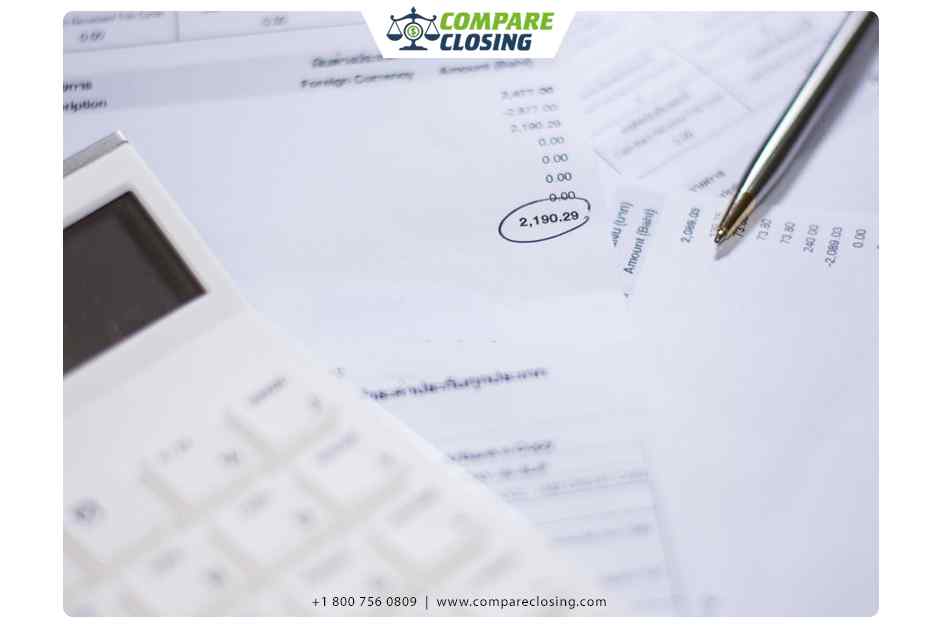Table of Contents
- What Are Netting Escrows & How Does It Work?: The Best Guide - January 2, 2024
- The Secret About Prescriptive Easement: Top Guide 1 Must Know - December 4, 2023
- About Home Equity Loans In Texas And How Can One Obtain It - November 27, 2023
What is the Credit Utilization Ratio?
The amount of revolving credit you’re currently using divided by the total amount of revolving credit you have available is your credit utilization ratio.
Meaning the amount you currently owe divided by your credit limit and is generally expressed as a percent.
Like, if you have a total of $10,000 in credit on two credit cards, and a balance of $5,000 on one, your credit utilization rate is 50%, so you will be using half of the total credit you have available.
You can calculate an overall credit utilization ratio and a rate for each of your credit accounts which is your per-card ratio.
A CREDIT UTILIZATION RATIO = YOUR TOTAL DEBT/ YOUR TOTAL AVAILABLE CREDIT
When calculating a credit score for you, the credit scoring models often consider your credit utilization ratio. They are the most influential factors, which can impact up to 30% of a credit score, depending on the scoring model being used.
When you have a low credit utilization ratio it only means you’re using less of your available credit.
So a Credit scoring models interpret this as an indicator that you’re doing a good job managing credit by not overspending. When you keep your spending in check it can help you reach higher credit scores.
When you have higher credit scores, it is easier to secure additional credit, like an auto loan, mortgages, and credit cards with favorable terms, when you need it.
What is Revolving Credit?
The credit utilization rates are based only on revolving credit, which is, your credit cards and lines of credit. Installment loans like your mortgage or an auto loan are not included in the credit utilization rate.
They affect your credit in a different way.
Because it doesn’t have a pre-determined end date it is called – revolving credit, the amount you owe carries over or revolves from month to month.
You have the option to borrow against your credit limit every month, reducing the amount of credit you have available, and thereby borrow against the available amount by repaying all or some of the credit.
You’ll be able to continue borrowing with your credit card or line of credit as long as your account is in good standing and you haven’t reached your credit limit.
You’ll pay interest every month, on the amount of credit you’re using. you won’t accrue any interest charges when you pay your credit card balances in full every month, resulting in your credit utilization rate below.
Installment loans like mortgages and auto loans factor into your debt to income ratio.
Your debt-to-income ratio is often used by mortgage companies and vehicle lenders to understand how much of your total annual income goes toward paying off installment debt.
Though lenders use your debt-to-income ratio to make decisions, it’s not used to calculate your credit scores.
Difference Between a Per-card and Total Utilization
Even if your credit utilization rate is a comparison of total credit used to total credit available, the amount of credit you’re using on individual cards is also important.
The per-card credit utilization rate is also calculated in the same way as the calculation of the overall utilization rate, except it compares the balance of an individual credit card to available credit on the same card.
If we go back to our earlier example of two credit cards with a total credit limit of $10,000, and you’re using $5,000, your total credit utilization rate is 50 %.
If both the card has a credit limit of $5,000 each and if you owe $3,000 on one card and $2,000 on the other card, then your per-card utilization rates would be 60% in one and 40% in the other.
What is a Good Credit Utilization Ratio?
In a FICO Score, it is recommended to keep your total credit utilization rate below 30%. So, if your total credit limit is $10,000, then your total revolving balance shouldn’t exceed $3,000.
A low credit utilization ratio is generally considered that you’re doing a good job of managing your credit responsibilities because you’re far from overspending.
A higher rate is an indication to potential lenders or creditors that you’re having trouble managing your finances.
Balance Reporting and Credit Utilization
You’re affecting your credit utilization rate when you pay your credit card bill every month.
You need to understand that your credit utilization rate and by default your credit scores, can be affected by the timing of when a credit card company updates your balance information with the credit reporting agencies.
This information is updated by the credit card companies at the end of every billing cycle.
It’s possible that when you make a payment on one of your credit cards and the credit card company updates your balance information with the credit reporting agencies still you will not see the impact on your credit scores for a few weeks
Do you need to open credit cards to improve your credit utilization ratio?
Your credit utilization ratio can be managed in several ways, like:
- Every month making payment of your credit card in full. Keeping your balances as low as possible, even if you’re not able to get completely back to zero’ each month, will still help you move in the right direction and avoid racking up excessive debt.
- Even if you don’t intend to use them keep open credit accounts that have zero balances.
- Request to increase your credit limit from your credit card issuer.
- Opening new credit accounts.
However, in the short term opening new credit accounts also has the potential to negatively affect your score.
Credit scoring models also consider how many times have new creditors, such as a new credit card company looked at your credit report within a certain time frame.
Too many inquiries within a short period of time can influence your credit scores.
In addition, compared to your overall credit mix if you are having too many credit cards could also be a risk factor and will impact your credit scores negatively.
If having open cards with high limits is too tempting for you to overspend, then be careful, consider the right number of accounts for you depending on your personal strengths and financial abilities.
How can a credit card closing affect your credit utilization rate?
Just like opening new cards can have a short-term negative effect, closing existing accounts too will have its effect. You’re reducing your total credit limit when you close a credit card account.
If you do not owe anything on any credit cards, your credit utilization rate is zero, and lowering your total available credit won’t change that rate.
Depending on the age of the credit card account that was closed, your length of credit history could be impacted negatively and affect your score.
You could affect your utilization rate if you carry a balance and reduce your total available credit by closing a zero-balance account.
For example, if you have $10,000 available credit on two cards, with a credit limit of $5,000 on each, and if you owe $5,000 on one. Your credit utilization rate is currently 50%.
And if you decide to close the zero-balance card, it will lower your total available credit to $5,000. And your credit utilization rate would be 100%.
Conclusion
Out of the many factors that can affect your credit scores your credit utilization rate is just one of them. So it’s important to understand how it works, and how you can make the credit utilization work for you.
Amanda Byford
Amanda Byford has bought and sold many houses in the past fifteen years and is actively managing an income property portfolio consisting of multi-family properties. During the buying and selling of these properties, she has gone through several different mortgage loan transactions. This experience and knowledge have helped her develop an avenue to guide consumers to their best available option by comparing lenders through the Compare Closing business.






What i don’t understood is actually how you are not actually much more well-liked than you may be right now. You are very intelligent. You realize thus considerably relating to this subject, made me personally consider it from a lot of varied angles. Its like men and women aren’t fascinated unless it is one thing to do with Lady gaga! Your own stuffs excellent. Always maintain it up!